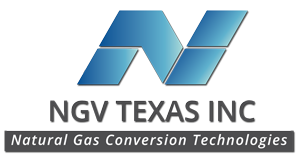The number and variety of factory-ready compressed natural gas (CNG) vehicles and conversion-eligible CNG vehicles is increasing. The majority of light, medium and heavy duty CNG vehicles in operation around the U.S. today resulted from a conversion process or retrofit performed by CNG certified installers utilizing certified and EPA approved kits manufactured by a variety of reputable companies across the nation.
Today, there are two types of CNG fuel systems available:
- Dedicated vehicles or conversions that run solely on CNG and normally have a fuel capacity equal to or larger than the original gasoline or diesel tank.
- Bi-fuel vehicles that have the ability to run on either CNG or gasoline/diesel. These bi-fuel vehicles typically retain their original gasoline/diesel tank and are retrofitted with an additional, smaller-capacity CNG tank.
Typically, certified installers will only perform a CNG conversion on new or nearly new vehicles. CNG conversion kits must meet stringent Environmental Protection Agency (EPA) and/or California Air Resources Board (CARB) requirements. Different states have different requirements on vehicle emissions, so please check whether your state follows EPA or CARB guidelines before converting your vehicle.
How does CNG Conversion Kit Works?
Compressed Natural Gas can be used in gasoline engines. Lean-burn engines can achieve higher thermal efficiencies when compared with gasoline engines at the expense of higher NOx and hydrocarbon emissions. Electronically-controlled stoichiometric engines offer the lowest emissions across the board and the highest possible power output, especially when combined with exhaust gas recirculation, turbocharging and intercooling, and three-way catalytic converters, but suffer in terms of heat rejection and fuel consumption. A suitably designed natural gas engine may have a higher output compared with a gasoline engine because the octane number of natural gas is higher than that of gasoline and this allows for an engine design with a higher compression ratio.
CNG may be refueled from low-pressure (“slow-fill”) or high-pressure (“fast-fill”) systems. The difference lies in the cost of the station vs. the refueling time. There are also some implementations to refuel out of a residential gas line during the night. Fueling a vehicle from a home natural gas fuel line is becoming more popular in the United States and tax credits may be available for installing the necessary appliance.

